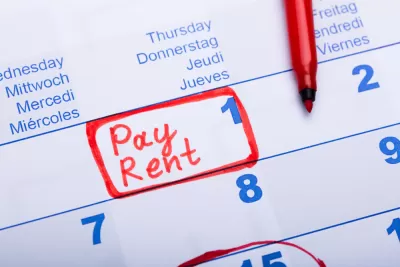The administration acknowledges its limited powers in solving the nation’s housing affordability crisis, but says new actions will examine unfair rental practices and recommend policies to state and local governments.

New federal actions announced today aim to help struggling renters as housing costs for tenant households continue to rise and the nation faces a massive shortage of as many as 5 million homes. As Rachel Siegel reports in the Washington Post, the administration says the new policies are not simply a response to recent spikes in rents, but are designed to address the broader problem of housing affordability and fair housing.
The new policies include directives for several federal agencies to assess instances of unfair rental practices and a template for a Renters Bill of Rights that is not tied to any mandates. According to Siegel, “much of Biden’s plans rely on state and local governments, as well as housing providers around the nation, to join in.”
But the plan has buy-in from federal agencies, which are tasked with understanding unfair rental practices and other issues that disadvantage renters. “The Federal Trade Commission and the Consumer Financial Protection Bureau will collect information exploring unfair practices in the rental market,” while other federal agencies including the Justice Department will examine competition issues in the rental market.
The actions the administration can take are limited, Siegel points out. According to organizer Tara Raghuveer, “The White House announcement introduces potential for agency-level action but falls short of issuing directives to regulate rent and address consolidation of the rental market.” For now, housing policy remains largely a state and local issue.
FULL STORY: White House unveils new tenant protections amid soaring rental costs

Alabama: Trump Terminates Settlements for Black Communities Harmed By Raw Sewage
Trump deemed the landmark civil rights agreement “illegal DEI and environmental justice policy.”

Planetizen Federal Action Tracker
A weekly monitor of how Trump’s orders and actions are impacting planners and planning in America.

The 120 Year Old Tiny Home Villages That Sheltered San Francisco’s Earthquake Refugees
More than a century ago, San Francisco mobilized to house thousands of residents displaced by the 1906 earthquake. Could their strategy offer a model for the present?

Indy Neighborhood Group Builds Temporary Multi-Use Path
Community members, aided in part by funding from the city, repurposed a vehicle lane to create a protected bike and pedestrian path for the summer season.

Congestion Pricing Drops Holland Tunnel Delays by 65 Percent
New York City’s contentious tolling program has yielded improved traffic and roughly $100 million in revenue for the MTA.

In Both Crashes and Crime, Public Transportation is Far Safer than Driving
Contrary to popular assumptions, public transportation has far lower crash and crime rates than automobile travel. For safer communities, improve and encourage transit travel.
Urban Design for Planners 1: Software Tools
This six-course series explores essential urban design concepts using open source software and equips planners with the tools they need to participate fully in the urban design process.
Planning for Universal Design
Learn the tools for implementing Universal Design in planning regulations.
Clanton & Associates, Inc.
Jessamine County Fiscal Court
Institute for Housing and Urban Development Studies (IHS)
City of Grandview
Harvard GSD Executive Education
Toledo-Lucas County Plan Commissions
Salt Lake City
NYU Wagner Graduate School of Public Service





























